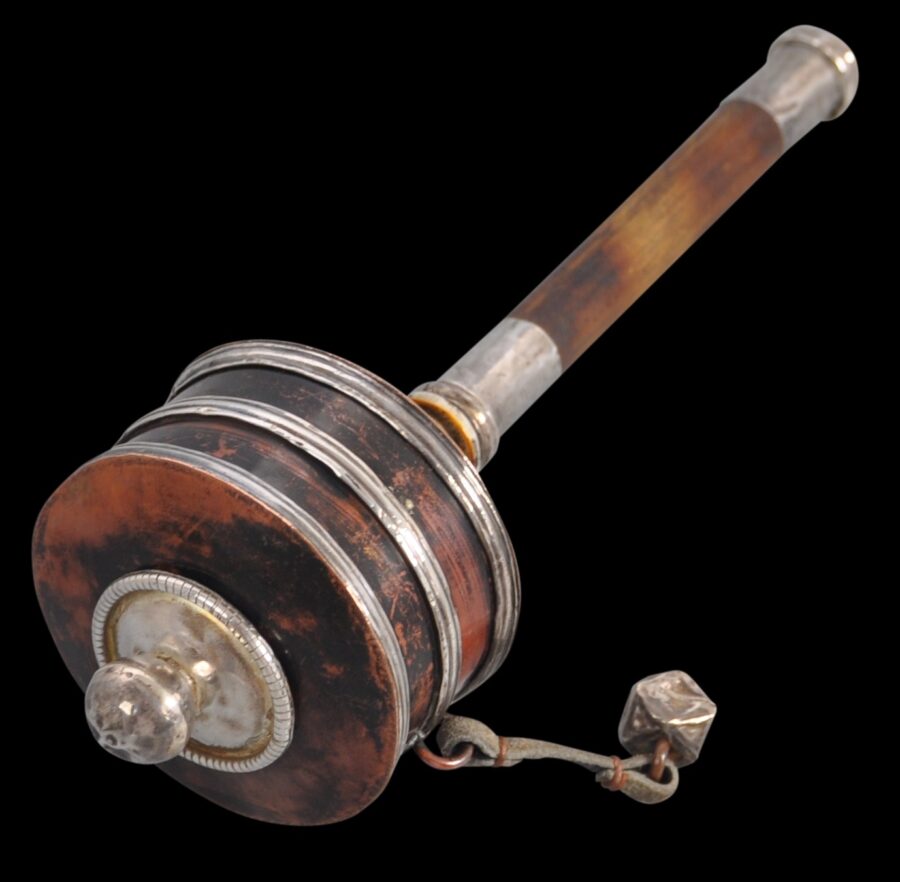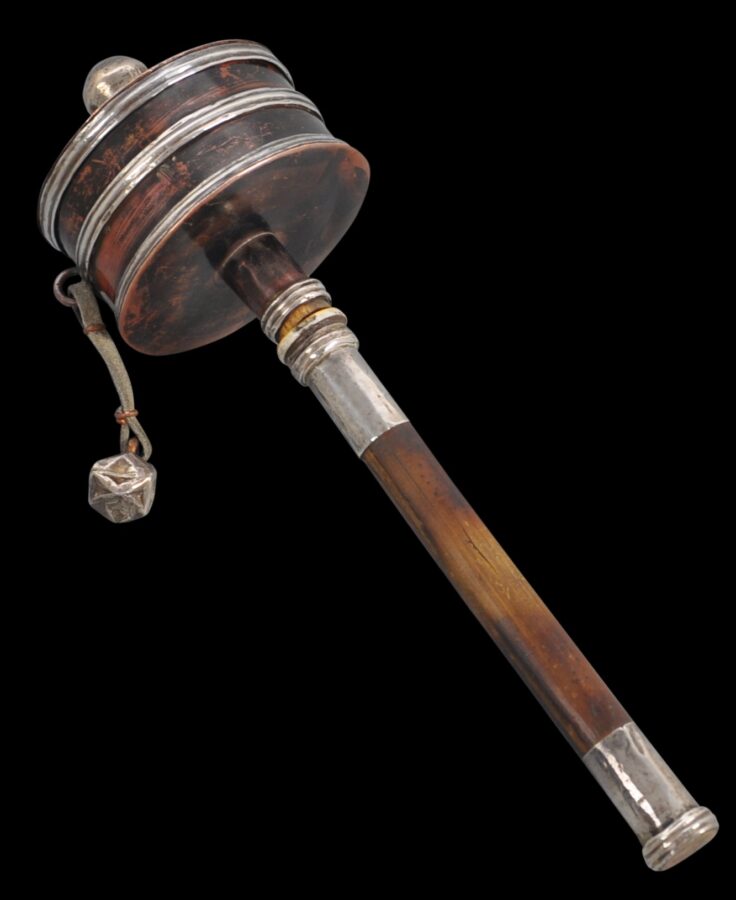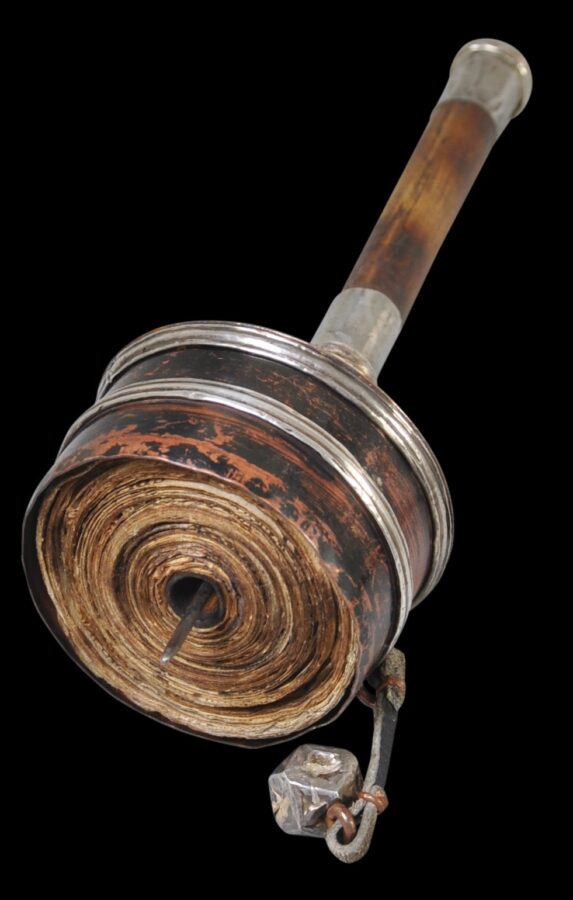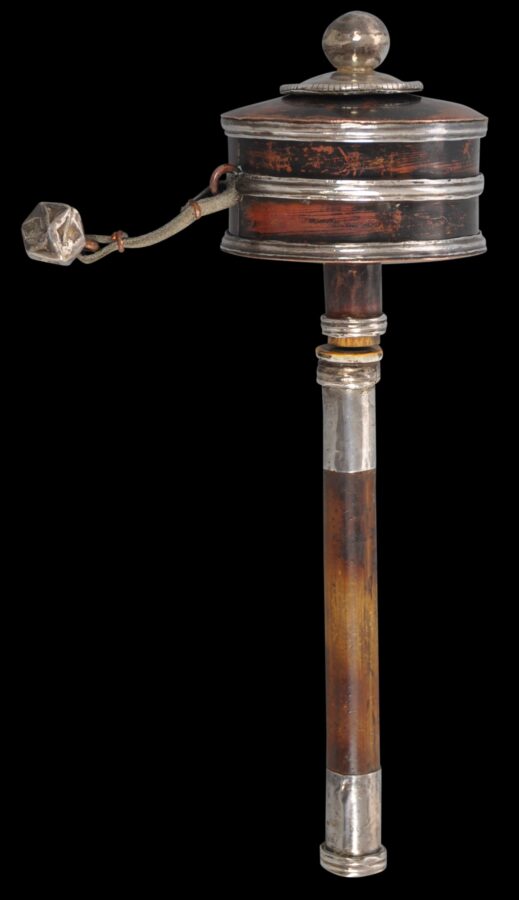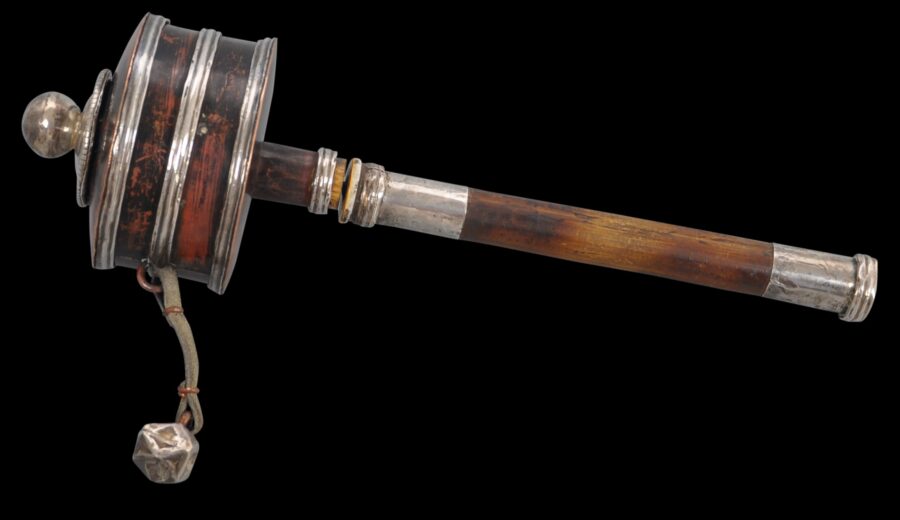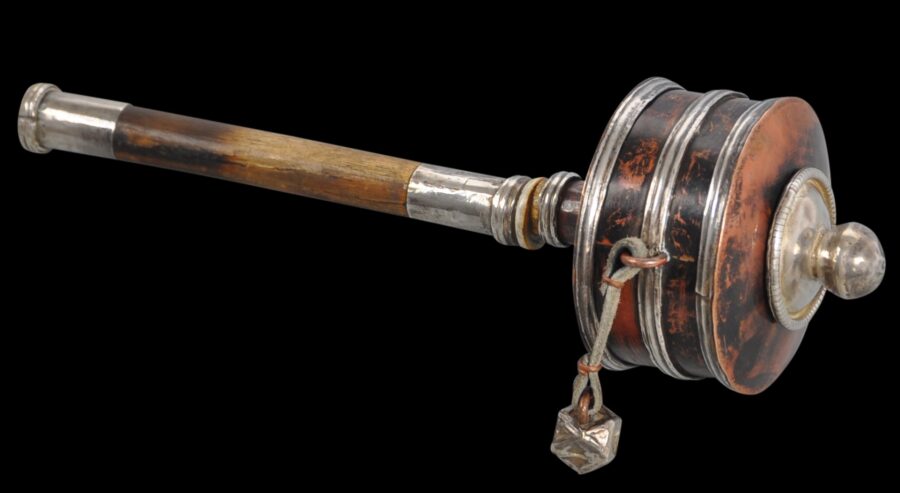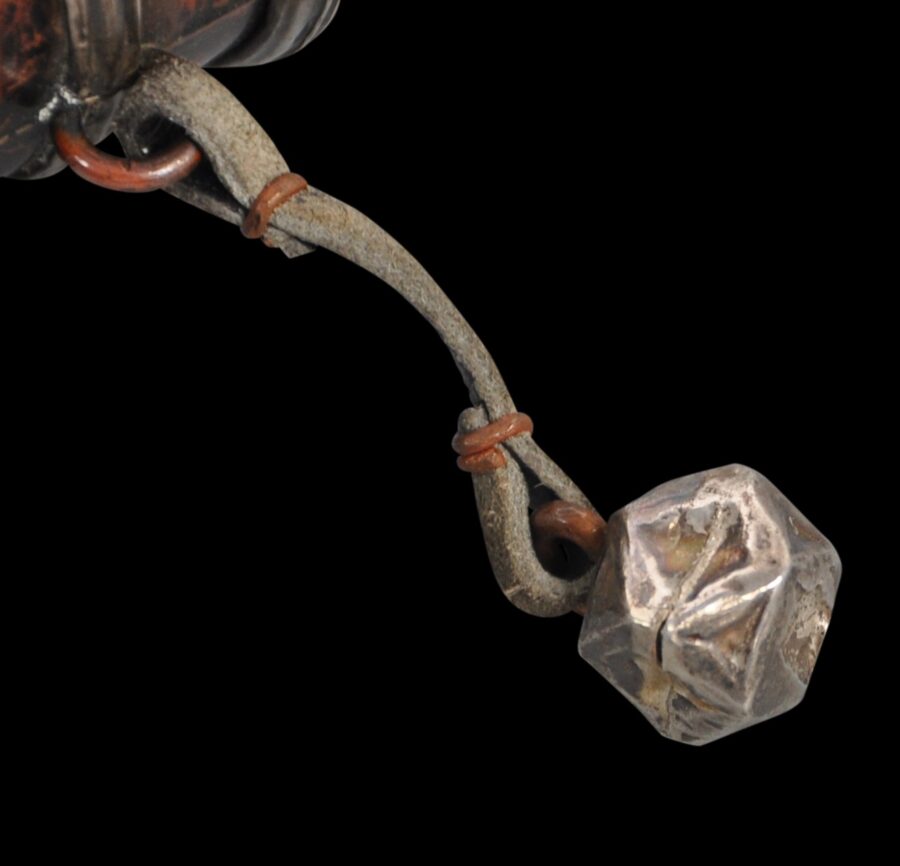This Tibetan prayer wheel comprises a ‘wheel’ of hammered copper with silver mounts; a heavy silver octagonal hedron weight, attached to the wheel by the original leather strap; and a wooden handle also with silver mounts. It has a superb patina and clear signs of age and use.
The wheel retains its tightly coiled mantra parchment inside.
The domed top cover of the wheel is surmounted by a silver lotus-bud finial.
Tibetans use mantras in many ways. They are used to invoke energies for ritual or magical purposes. Om mani padme hum is the best known example of a Tibetan mantra but there are many others. Mantras only work if learned and uttered ‘properly’ (Rawson, 1991, p. 78.) Reciting mantras can even affect one’s karma. The more often mantras can be recited, the greater their benefit. Mantras might be written on flags so that the mantra is deemed to have been ‘said’ as the wind blows through or past it. Another way to be deemed to have recited a mantra without actually having said it, is to turn a prayer wheel which either has the mantra emblazoned on its outside or written on parchment on the inside, so that each turn of the wheel is equivalent to one recital of the mantra. Consequently, many Tibetans endlessly turned prayer wheels.
This example would have been for everyday use but perhaps by a noble or someone from a wealthier family given the luxury material from which it is made.
A 19th century date has been assigned; it might be earlier. It is in fine condition without losses or repairs.
References
Rawson, P., Sacred Tibet, Thames & Hudson, 1991.


